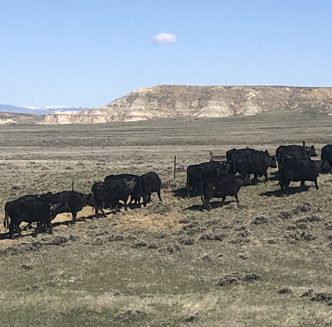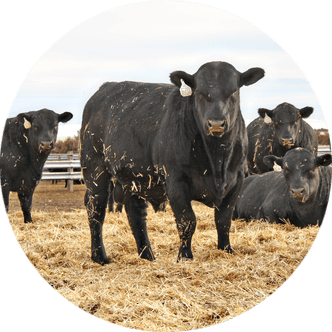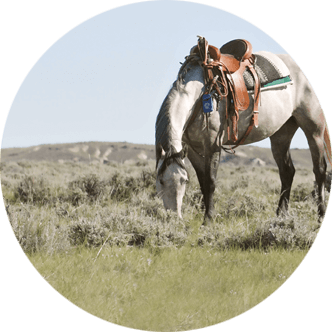U.S. Wool: ASI takes action for American wool through new Wool Action Plan
Based on an industry analysis by Market Solutions LLC conducted in 2024 and presented at the 2025 American Sheep Industry Association (ASI) Annual Convention, the Wool Council asked association staff to develop a plan to spur growth and development within the American wool industry.
The new Wool Action Plan identifies five key areas which need to be addressed, as well as ways in which ASI and the industry can go about implementing changes and improvements in these areas.
Current situation
Of the average annual American wool clip, 60 percent is exported internationally – with China continuing to serve as the industry’s largest market. Another 15 percent is used in clothing, blankets and other items for the U.S. military, while 19 percent is used by domestic commercial mills and six percent is processed by domestic small mills.
U.S. textile manufacturing has changed dramatically since the 1990s, when much of the commercial textile industry moved to international destinations. Domestic manufacturing has always been important to the American wool industry, which has struggled dramatically with the loss of manufacturing capacity. But with 40 percent of American wool staying in the U.S., opportunity exists to grow the domestic side of the industry, and this is where the Wool Action Plan will focus its energy.
While the industry has plenty of producers growing American wool around the country, there are only two first-stage processors in Chargeurs and Bollman Industries.
As the wool moves through the supply chain, there are more options for spinning and eventually manufacturing.
It’s critical first-stage processors – which are the gateway into manufacturing – are efficient and produce high-quality products while also having plenty of raw wool to keep their facilities and staffs busy.
The analysis identified several areas of opportunity for American wool in the domestic market.
These include the athleisure and outdoor apparel markets; taking advantage of the demand for locally-sourced, natural fibers; developing yarns for export and more.
Action plan
ASI staff identified five key areas to focus on in the Wool Action Plan.
These areas are improving wool quality, assisting first-stage processors, increasing demand through promotion and education, supporting small- and mid-size mills and exploring a traceability program.
Improving wool quality takes the top spot because the way to increase domestic use of American wool is to produce high-quality wool companies want to buy. This includes reducing the average micron, reducing vegetable matter and increasing yield.
There’s quite a bit of variety in the American wool clip, so the industry needs to establish a baseline and then work with the ASI Production, Education and Research Council and it’s Genetic Stakeholders Committee to collaborate efforts.
ASI will also develop educational tools such as webinars, brochures and social media posts. ASI will revitalize the quality improvement program and ensure testing innovations are available to allow producers to truly understand the quality of the wool they are growing.
As previously mentioned, first-stage processing is a key component in these efforts.
Many producers remember when Superwash was introduced to the American wool industry in 2011 like it was yesterday. In fact, it spurred the development of several American-made wool sock lines. But Superwash is more than a decade old now, and technology has evolved.
The Wool Action Plan calls for continued investment in first-stage processors. ASI will help these processors explore funding sources and grant opportunities while bringing in professionals from around the world to provide technical assistance as they look to expand their capacity and efficiency.
The third point in the Wool Action Plan calls for increasing demand through promotion and education.
The industry needs to educate consumers about the wonderful qualities of fine American wool and to convince them the added cost of buying American wool products – from underwear to outerwear and everything in between – is worth the price of admission.
There’s a reason people who often spend time in extreme conditions – whether it’s cold or hot – have come to realize the value of wool products. There’s a reason the U.S. military uses American wool in everything from cold weather gear to combat and dress uniforms.
ASI will continue consumer outreach, as well as develop additional resources to market American wool domestically while drawing on its experience in marketing this all-natural fiber to overseas manufacturers.
There’s been a resurgence of small- and medium-size mills in the U.S. in recent years as customers gravitate toward locally-sourced and locally-made products.
The fourth point of the Wool Action Plan calls for ASI to provide additional support to these mills. As is the case with the first-stage processors, many of them need access to additional funding so they can increase efficiency and capacity.
These mills provide an avenue for American wool producers with smaller flocks to get their wool through the manufacturing process, whether they just want to develop a farm-specific yarn line or have their wool processed into consumer products.
And finally, the Wool Action Plan calls for exploring traceability options within the industry. Consumers who are willing to pay higher costs for natural fibers over synthetics often want to know where those fibers are coming from, how they were produced and that they are supporting local economies with their purchase.
Providing American wool to the military is also important for the military and for wool usage.
“To successfully integrate additional programs, we will need to carefully evaluate our current priorities,” ASI Wool Marketing Director Rita Samuelson wrote in a letter to Wool Council members. “This may involve strategically changing programs and – in some cases – reassessing or scaling back lower-priority initiatives to make room for the new ones. Our goal is to optimize our efforts without compromising the quality and success of new and ongoing projects.”
“Although this is a transitional year – with the complexities of a farm bill year, uncertain funding and unforeseen challenges – it also presents opportunities for growth and innovation,” she continued. “By staying realistic about our capacity and leveraging our strengths, we are confident in our ability to drive meaningful progress. This plan positions us to move forward with intention. We’re doing all of this with the end goal of creating a strong, resilient American sheep and wool industry now and into the future.”
ASI is the national organization representing the interests of sheep producers located throughout the U.S. From east to west, pasture-based flocks to range operations, ASI works to represent the interests of all producers. This article was originally published in the May edition of ASI’s Sheep Industry News.





